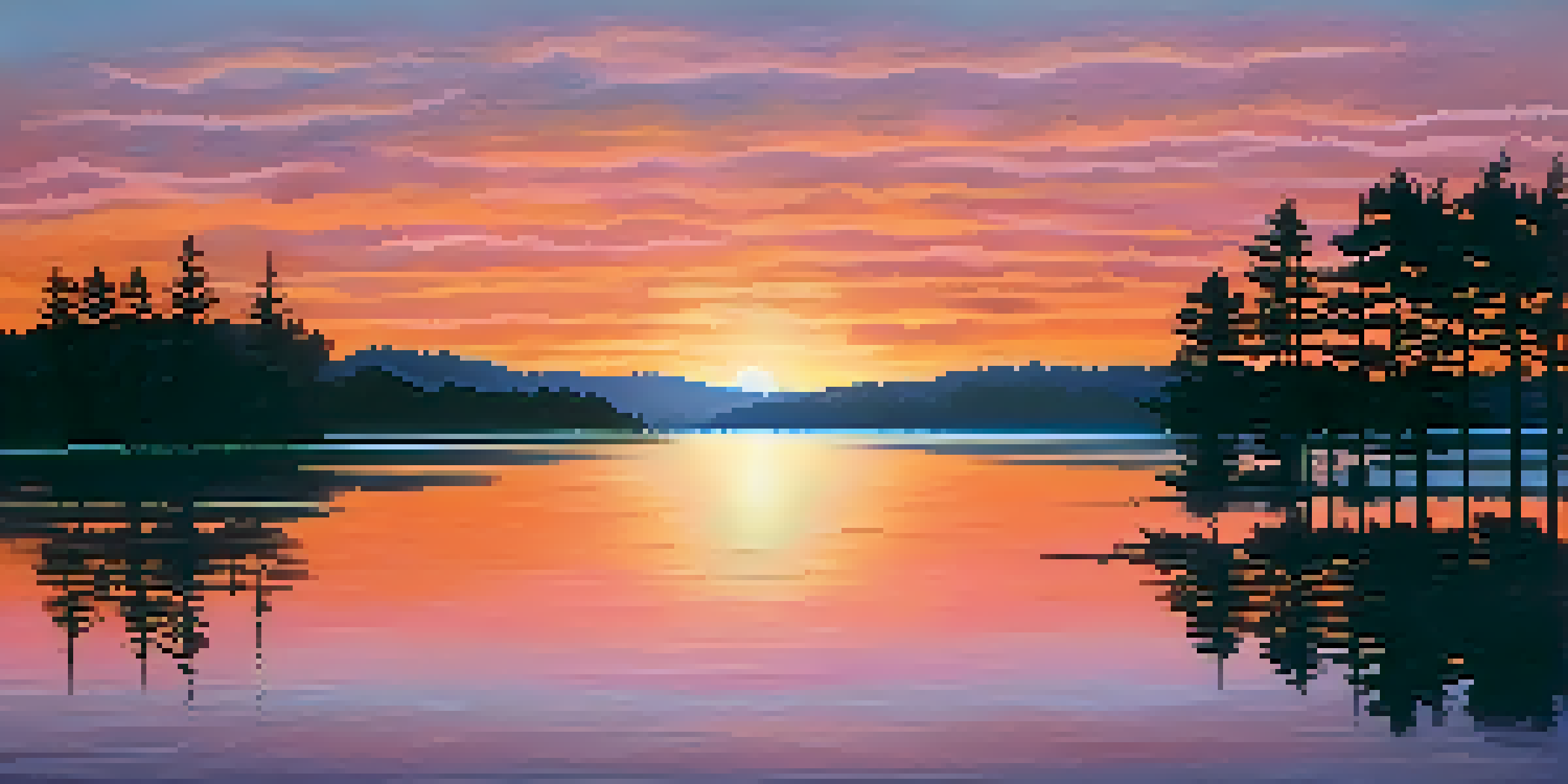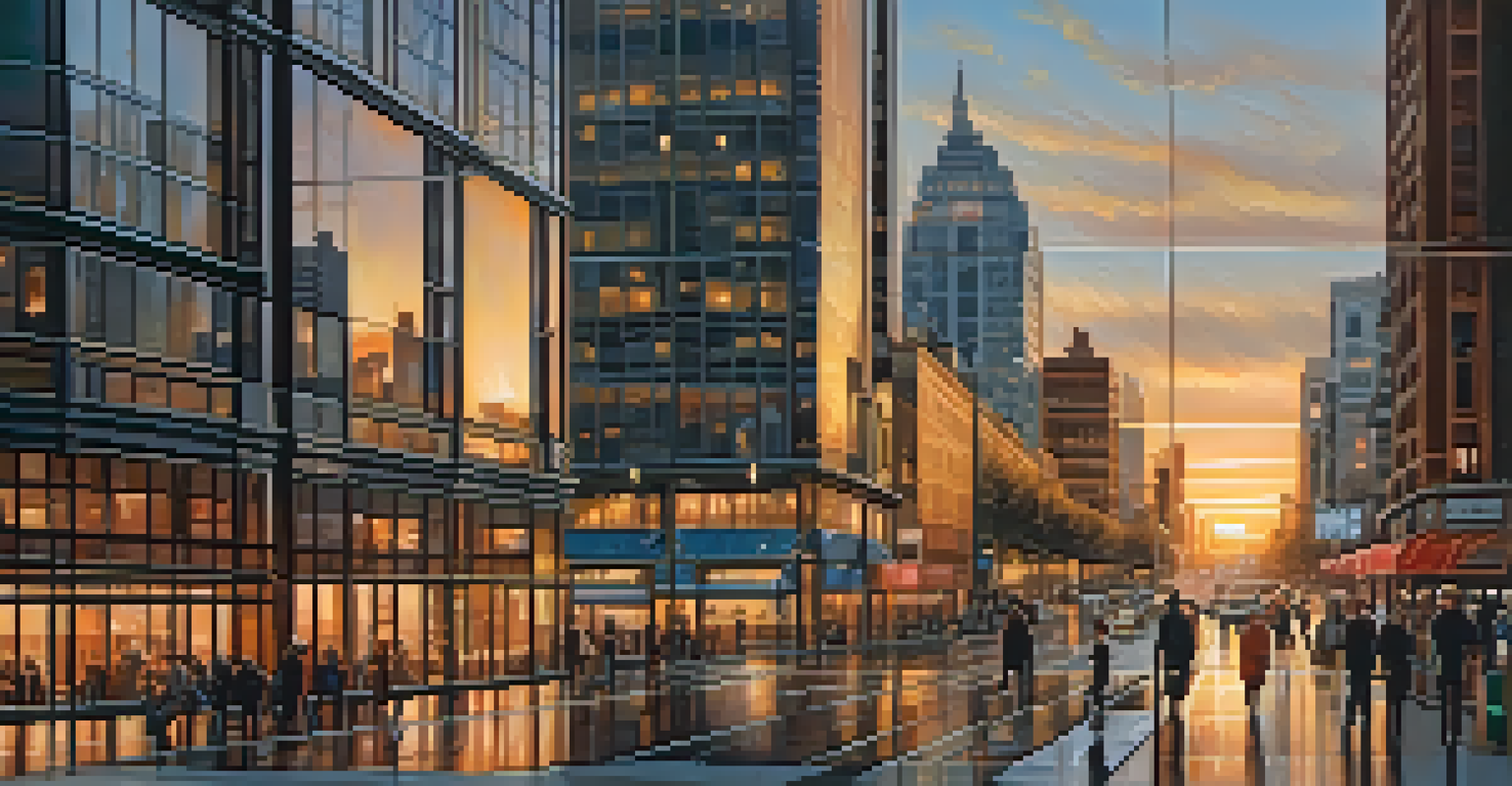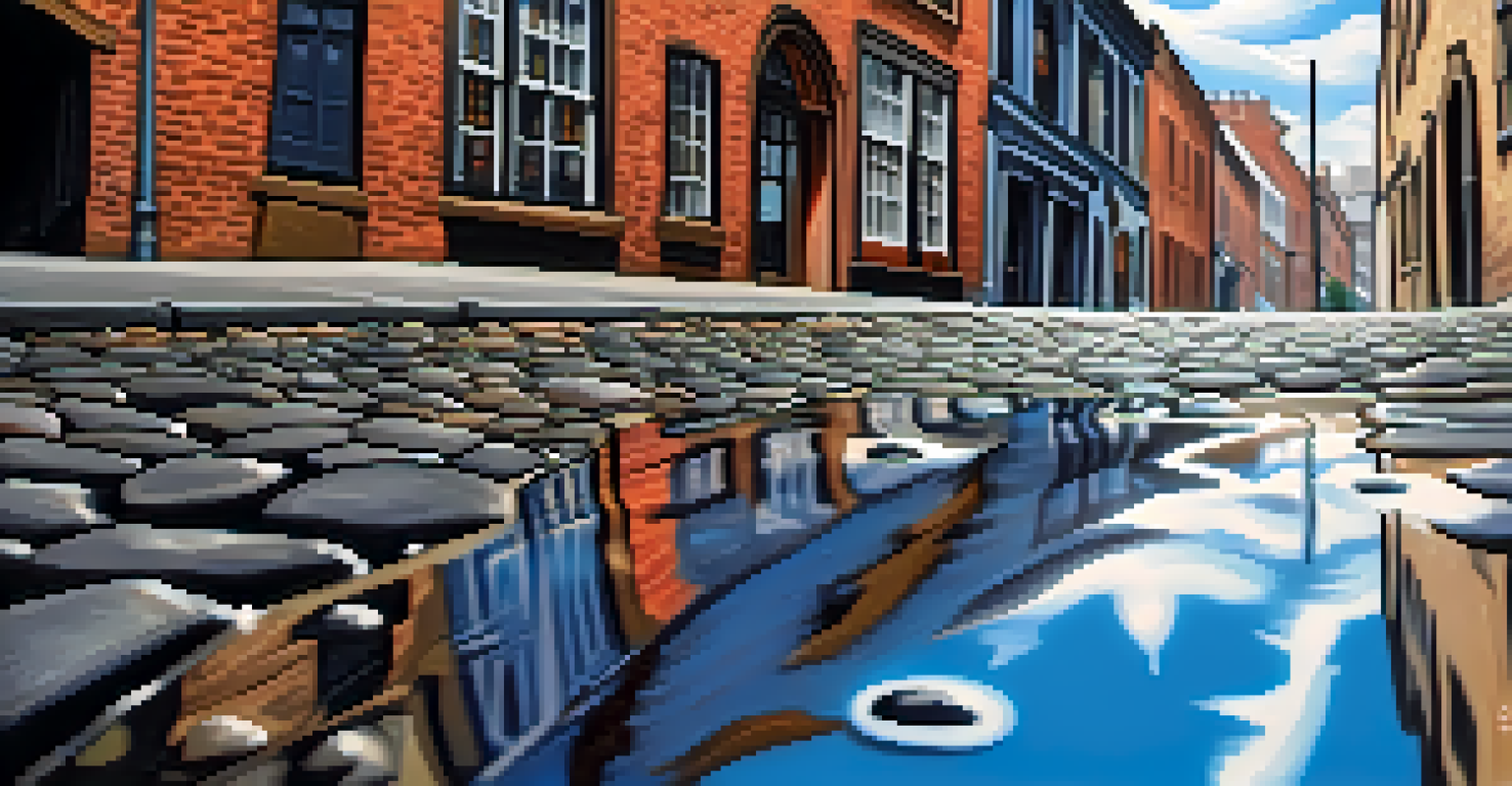Photographing Reflections: Techniques for Stunning Mirror Images

Understanding the Beauty of Reflections in Photography
Reflections add a unique layer of interest to your photographs, transforming ordinary scenes into extraordinary visuals. They can evoke emotions and create a sense of depth that draws viewers in. Whether it's a serene lake, a city skyline, or even a shiny puddle, reflections can tell a story that enhances the overall composition of your image.
Photography is the story I fail to put into words.
Consider the way light interacts with reflective surfaces. The reflections can amplify colors and contrast, adding vibrancy to your photographs. By understanding this interplay, you can make intentional choices in your framing and exposure settings that highlight these beautiful mirror images.
Ultimately, reflections are more than just a visual element; they invite viewers to look deeper and consider the relationship between the subject and its surroundings. This connection can turn a simple snapshot into a captivating work of art.
Choosing the Right Time and Place for Reflection Shots
The time of day plays a crucial role in capturing stunning reflections. Early mornings or late afternoons, when the sun is low, can create soft, warm lighting that enhances the beauty of reflective surfaces. During these golden hours, the light glimmers on water, making for captivating images.

Location is equally important. Seek out areas with calm water, such as lakes, ponds, or even urban settings with glass buildings. These locations offer ideal conditions for reflections, allowing you to experiment with various angles and perspectives to achieve your desired effect.
Captivating Reflections Enhance Photos
Reflections add depth and emotion, transforming ordinary scenes into captivating visuals.
Don't forget to explore unconventional places too! Sometimes, an unexpected surface like a wet street after rain or a shiny car hood can yield beautiful reflections that surprise and delight. Keep your eyes open to opportunities in your environment.
Mastering Composition Techniques for Reflective Images
Composition is key when photographing reflections. The rule of thirds is a great starting point; position your horizon line along the lower third of the frame to create a balanced image. This technique allows both the reflection and the subject above the water to shine equally.
Reflections are the memories of the places we've been and the people we've met.
Additionally, consider leading lines. These can guide the viewer's eye into the photograph, enhancing the depth and perspective. Whether it's the shoreline of a lake or the edges of a building, leading lines can create a dynamic composition that draws attention to the reflection.
Lastly, don't underestimate the power of symmetry. A perfectly symmetrical reflection can evoke a sense of harmony and calm in your images. Explore various angles to find the best symmetry and create that gorgeous mirror effect.
Utilizing Light to Enhance Your Reflection Photography
Light is your best friend when it comes to capturing stunning reflections. Experiment with different lighting conditions to see how they affect the mood and tone of your photographs. For instance, shooting during sunrise or sunset can create warm golden hues that add magic to your reflective images.
Using natural light creatively can also produce striking effects. Backlighting can highlight the edges of subjects, making the reflection more pronounced. Alternatively, soft diffused light on overcast days can reduce harsh contrasts and create a dreamy, ethereal quality in your photos.
Timing and Location Matter
The best reflection shots are often captured during golden hours in calm locations, such as lakes or urban settings.
Don't forget about artificial light sources as well. Using a flashlight or LED panel can help illuminate your subject and enhance the clarity of reflections, especially in darker environments. Play around with light to discover what works best for your scene.
Camera Settings for Achieving Perfect Reflections
Understanding your camera settings is crucial for capturing sharp, stunning reflections. Start with a low ISO to minimize noise, especially in low-light conditions. A higher ISO can introduce grain, which might detract from the clarity you're aiming for.
Aperture settings are also vital. A wider aperture (like f/2.8) can create a shallow depth of field, beautifully blurring the background while keeping the reflection crisp. Conversely, a smaller aperture (like f/8) can help ensure both the foreground and reflection are in focus, offering more detail.
Shutter speed is another key factor. A slower shutter speed can capture smooth water surfaces, enhancing the reflection's clarity. However, if there's a breeze, you may need a faster shutter speed to avoid blurred reflections. Always consider the conditions of your shooting environment.
Editing Techniques to Enhance Reflection Photography
Post-processing can elevate your reflection images by enhancing colors and details. Software like Adobe Lightroom or Photoshop allows you to adjust brightness, contrast, and saturation, making the reflections pop. A subtle increase in contrast can help separate the reflection from the background, drawing attention to the mirror image.
Consider cropping your images to improve composition and focus. Sometimes, removing distractions from the edges can lead to a more impactful photograph. Additionally, applying a vignette effect can subtly draw the viewer's eye towards the center of the image, emphasizing the reflection.
Master Composition and Light
Using techniques like the rule of thirds and playing with light can significantly enhance the quality of reflection photography.
Finally, don't shy away from experimenting with creative edits. Applying filters or creating double exposures can add artistic flair to your reflections, giving your photographs a unique touch that reflects your personal style.
Exploring Different Types of Reflections in Your Photography
Reflections come in various forms, each offering unique opportunities for creative expression. Water reflections are the most common, but don't overlook glass surfaces, mirrors, or even shiny metal. Each type presents its own challenges and rewards, allowing you to explore different techniques.
Experimenting with different surfaces can also change the mood of your images. For instance, reflections on a calm lake can evoke tranquility, while city reflections on glass buildings can convey a sense of vibrancy and energy. Understanding these nuances helps you craft more compelling visual stories.

Don't hesitate to mix and match! Combining water reflections with architectural elements can create dynamic compositions that surprise and engage viewers. The key is to keep experimenting and discovering what different reflective surfaces can offer.